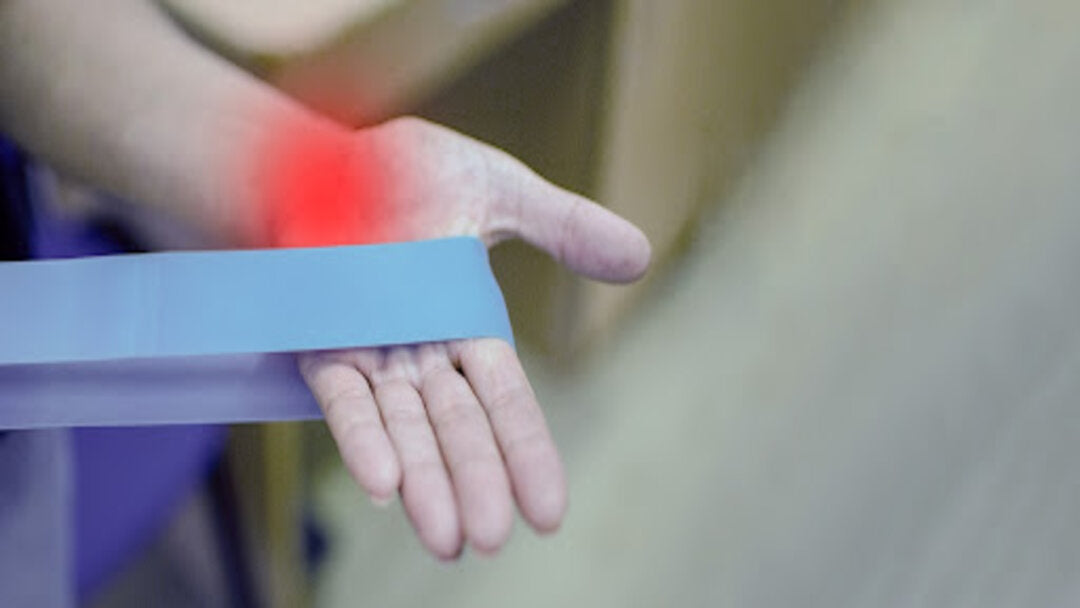Imagine yourself at work. Your hand and fingers start to burn a little. Then you feel some slight tingling and itching. It only worsens as the workday goes on, and suddenly your palm and fingers go numb. You get home later, and you realize it is getting no better. You have extreme weakness in your hand and arm and trouble holding things. As long as you don’t have other more concerning symptoms, You might be experiencing the beginning signs of carpal tunnel syndrome.
What is the Carpal Tunnel?
The carpal tunnel itself is a space in the wrist that holds tendons and your median nerve. Carpal Tunnel Syndrome is when this space is too compressed, and it is a widespread problem affecting millions of people every year.
Symptoms, such as numbness and tingling in your hand and arm, are caused by pinched nerves in the wrist. This can be due to a person’s unique anatomy, any underlying health issues they might have, or whether the wrists are overused or constantly moved in repetitive patterns.
Risk Factors
Some risk factors increase someone’s chances of developing Carpal Tunnel Syndrome, and these factors may include:
- Previous wrist fractures or dislocation
- Hand or wrist deformity
- Heredity (having a smaller tunnel)
- Pregnancy
- Hemodialysis
- Arthritis and gout
- Thyroid Issues
- Diabetes
- Tumors in the carpal tunnel
- Abnormal protein deposits
- Old age
- Alcoholism
- Gender (females tend to have this issue more than males)

Causes
People who tend to develop carpal tunnel syndrome usually regularly do activities that involve repetitive finger action. If you are constantly working with your hands, doing things like high impact hammering or dealing with constant vibrations, like construction. Long-term motions like spending 8 hours a day typing away on the computer or activities such as sewing, you might start to experience signs of carpal tunnel.
Some specific conditions are linked with carpal tunnel syndrome:
- Thyroid dysfunction
- Autoimmune disorders such as rheumatoid arthritis
- High blood pressure
- Diabetes
- Fluid retention from menopause or pregnancy
- Fractures and Trauma involving the wrist
Some more personal lifestyle factors may increase the risk for carpal tunnel syndromes like smoking tobacco, a high salt diet, obesity, and whether or not you live an active life or one that is more sedentary.
However, carpal tunnel syndrome is most often found in people who work jobs like manufacturing, factory work, office occupations, and construction.
Related: 4 Best CBD Products for Nerve Pain
Symptoms
Symptoms usually progress slowly and can occur at any time in your life. Some beginning signs of carpal tunnel syndrome are experiencing tingling in your fingers, especially the thumb, middle, and index fingers, and having numbness during the night.
You might notice you shake your hands in bed to regain feeling or relieve the tingling sensations, which is just another early sign of the condition. These earlier symptoms can lead to decreased feeling in the fingertips, difficulty using your hands, and even inability to perform specific tasks. Some even complain of pain and burning that travels up and down the arm.
Weakness
You might feel extreme weakness in the muscles in your arm, hands, and fingers. You might experience difficulty handling small objects or grasping on to things. Writing and using the computer can also become challenging to perform. You might start to drop items more than usual and require help doing delicate, simple tasks like buttoning your jacket.
Numbness and Tingling Sensation
Numbness and tingling sensations in these areas may also occur as symptoms of carpal tunnel syndrome. These sensations may come and go or be constant and persistent as they spread throughout the fingers.
Treatment
Treatment options genuinely depend on the severity of the patient’s condition. The doctor will examine and ask the patient how much pain and weakness they are experiencing. Once a wrist injury diagnosis is determined, health professionals will usually only resort to surgery as a treatment option when it is believed to be necessary.
Other treatments will usually be attempted first, nonsurgical options such as;
- Wrist splints that hold the hand at a neutral position, especially when sleeping
- Pain medication and anti-inflammatories
- Steroidal injections in the tunnel area to reduce swelling
- Avoiding work and activities that overuse or extend the wrist
- Treatment of underlying issues if that is the cause, such as arthritis and diabetes
Related: CBD and Drug Interactions

How to Prevent Wrist Injuries and Carpal Tunnel Syndrome
Sadly there’s no perfect way to prevent wrist swelling that can lead to injury and the symptoms of carpal tunnel syndrome. You can, however, take small steps to reduce stress and strain on your hands and wrists as much as possible.
Supplements
Although still debated, the use of specific vitamins like vitamin B6 has been known to alleviate and prevent symptoms of carpal tunnel syndrome. The use of natural anti-inflammatories such as turmeric that can be added to your diet is also popular. Acupuncture has also been used to prevent wrist injuries at work with some success.
Topicals
Slather the wrists with pain relief or use a topical menthol during your workday, significantly reducing pain and inflammation. These topical solutions are also great to put on before a physical therapy session or exercise routine.
For the best topical pain relief, try Herbal Ice Muscle Rub today. The natural way to get the relief you need.
Stretch
Try to take at least a few minutes out of your day to do simple stretches with your arms, hands, and fingers before working. One simple hand exercise you can do to prevent stiffness: open and close your hand for 5-second intervals.
Related: Can’t Straighten Your Arms After a Workout?
Take Breaks
Step away from work or your activity for a 20-minute break when you start to grow tired. This is especially important if you are dealing with tools or applying vibration or pressure to your wrists.
Posture
Avoid lots of extreme wrist bending. Always remember to let it rest back in a neutral position once in a while. It takes the pressure off of the median nerve. Wearing a wrist brace or splint can sometimes also help with this issue. Attempt to be lighter and softer with your daily actions, be careful not to always be in a tense hand position while working.
Keep Warm
It makes sense that when you are cold, your joints become stiffer, and you feel more pain. Keep at a warm and reasonable temperature when working, so the pain and stiffness don’t increase.
Therapy
Occupational and physical therapy can be used as a prevention of further damage. A medical professional will be able to help you find better ways to work and move your muscles. They can advise you to change up your routine and learn exercises that build up your muscle strength
Don’t Suffer from Carpal Tunnel
No matter how you choose to manage your carpal tunnel symptoms, Herbal Ice can help make it easier. Shop now.



